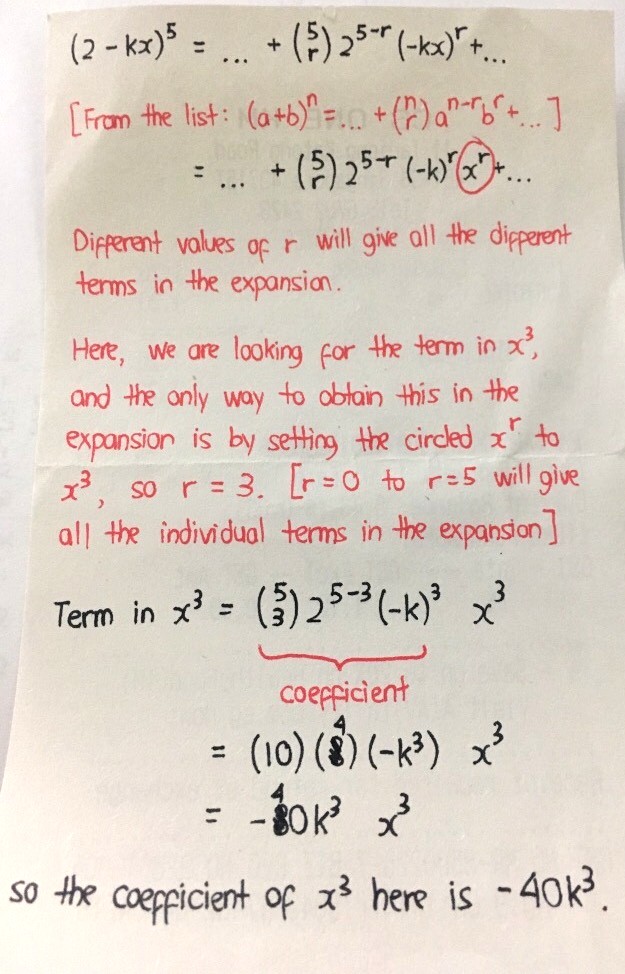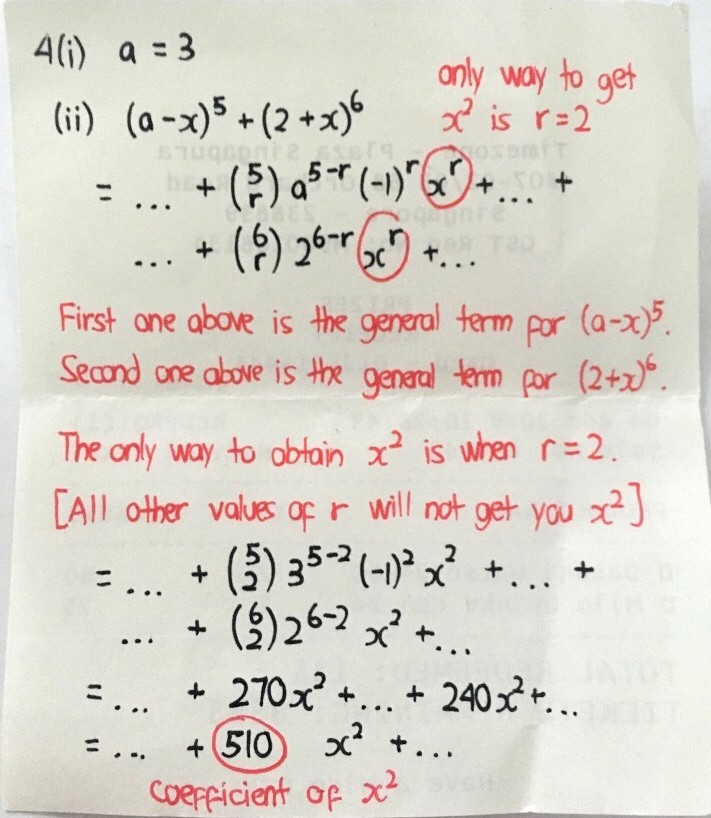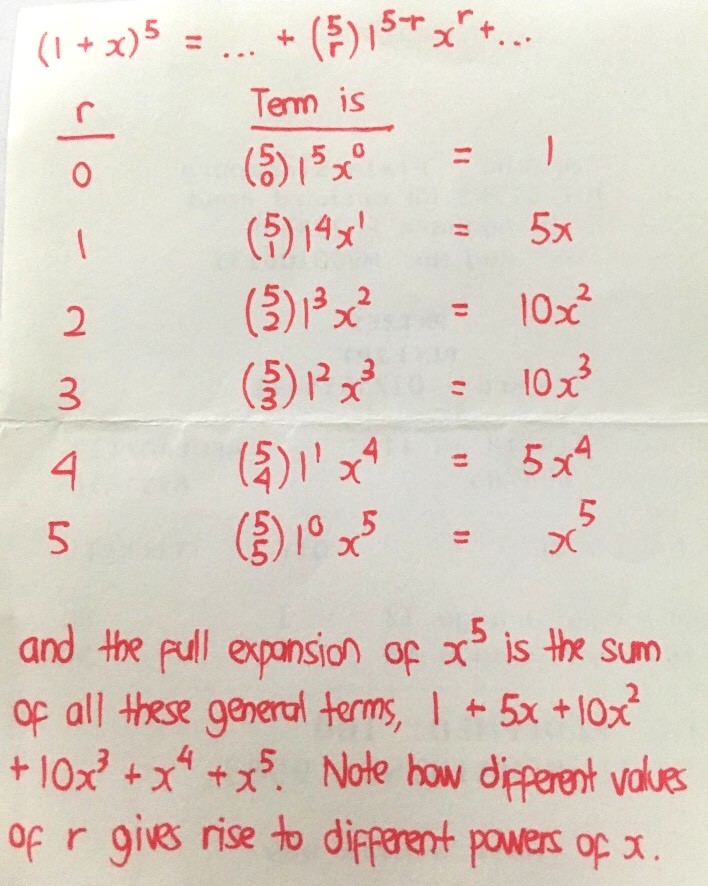Ask Singapore Homework?
Upload a photo of a Singapore homework and someone will email you the solution for free.

See 4 Answers
done
{{ upvoteCount }} Upvotes
clear
{{ downvoteCount * -1 }} Downvotes
Good evening Irah! Here are my workings for thie question. Let me know if my workings are unclear and I will explain the workings in greater detail.
Date Posted:
5 years ago
Actually, the part of the coefficient part is what Im still confuse on how to do that
How do you actually do that
Now, the general term of the expansion can be obtained using the formula.
The general term represents a specific term in the expansion (each with different values of r). Collectively, they form the full expansion.
The general term represents a specific term in the expansion (each with different values of r). Collectively, they form the full expansion.
The question asks for coefficient of x3. The word coefficient simply refers to the number attached to the x3. But for now, we treat coefficient of x3 as ‘term in x3’.
We must obtain the general term in the expansion and then collect all x together. Here, the general term has x raised to the power of r. To find the term in x3, we must set r to 3. Using this r = 3, we put back into the general term.
We must obtain the general term in the expansion and then collect all x together. Here, the general term has x raised to the power of r. To find the term in x3, we must set r to 3. Using this r = 3, we put back into the general term.
done
{{ upvoteCount }} Upvotes
clear
{{ downvoteCount * -1 }} Downvotes
We need to tackle each expansion separately. In effect, you have to treat (2 - kx)^5 and (3 + x)^6 as two separate expansions before combining them with the +.
If you are not comfortable with this method, you can also expand the expansions fully to x^3.
If you are not comfortable with this method, you can also expand the expansions fully to x^3.
Date Posted:
5 years ago
Thank you so much!
done
{{ upvoteCount }} Upvotes
clear
{{ downvoteCount * -1 }} Downvotes
Here is the explanation for 4ii. I have to say that this topic is not easy to grasp unless you have a strong understanding of how the terms within the expansions work. A lot of people struggle with this topic because there is a lot of work to do in this topic even though there is only one formula to memorise for this chapter.
Date Posted:
5 years ago
done
{{ upvoteCount }} Upvotes
clear
{{ downvoteCount * -1 }} Downvotes
Let me know if you are still stuck with the concept of the general term and the coefficients.
Date Posted:
5 years ago








